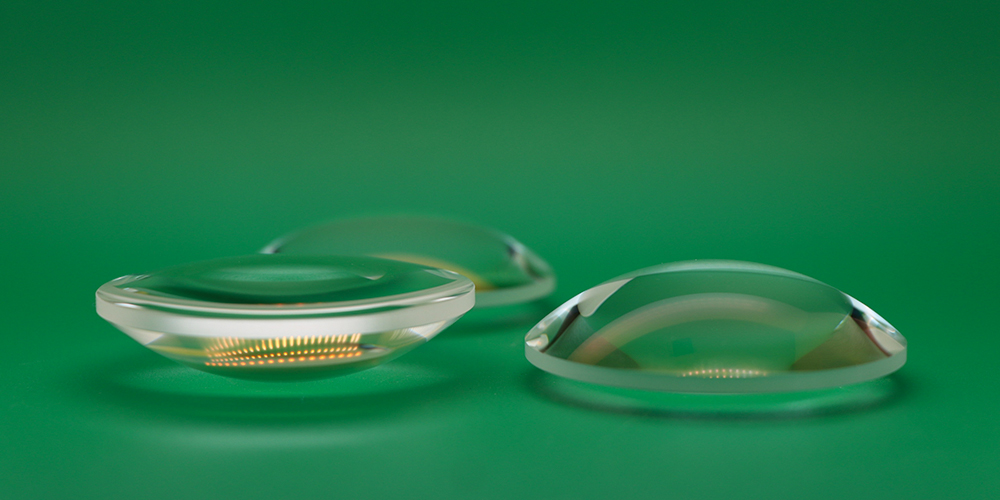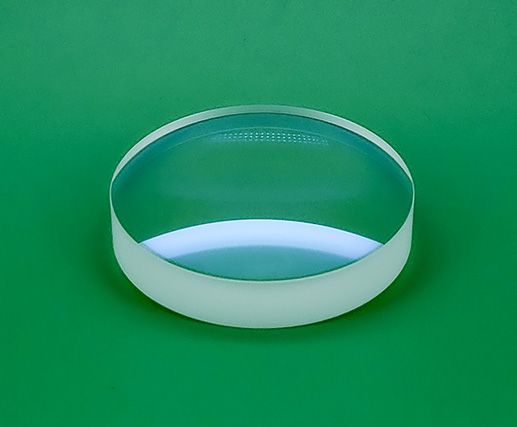Bi-Convex Lenses
Bi-convex lenses with both sides convex, meaning both surfaces of the lens bulge outward. Through the refractive action at the curved surface interface, it achieves the convergence of the incident light beam. When parallel light passes through a biconvex lens, the first convex surface causes the light to bend towards the center, and the second convex surface further intensifies this bending effect, ultimately converging the light at the focal point. The lens's converging ability depends on the curvature radius of the two convex surfaces and the refractive index of the lens material; the greater the curvature and the higher the refractive index, the more pronounced the focusing effect. This design makes it a fundamental component in optical systems for achieving light convergence and imaging.
The working principle of the biconvex lens is based on the law of refraction of light. In a biconvex lens, light enters the lens from the air and then exits the lens back into the air, refracting each time. Due to the different shapes of the lens surfaces and the refractive index of the medium, the light will propagate along a specific path after passing through the lens, thus achieving the convergence or divergence of light. This is the working principle of the biconvex lens.
CLZ Optical Co., Ltd. offers a catalog of Bi-convex lenses for various applications, and also provides custom-manufactured Bi-convex lenses based on customer drawings or specifications. We can meet the needs of different types of Bi-convex lenses for optical systems. Bi-convex lenses have the following characteristics:
1. Symmetry: The two convex surfaces of a biconvex lens usually have the same curvature radius, which gives the lens symmetry in optical performance.
2. Converging light: The biconvex lens can converge parallel light onto a single focal point, and is therefore commonly used in applications such as magnification, focusing, and imaging.
3. Material properties: Glass biconvex lenses are typically made of optical glass, a material with high light transmittance, low dispersion, and good mechanical properties, suitable for precision optical systems.
4. Using biconvex lenses can reduce vignetting, enhance contrast, and make observed objects clearer.
CLZ Optical Co. Provides standard catalog of double convex lenses made of various materials (such as optical glass, fused quartz, etc.) and specifications, and provides custom processing of Bi convex lenses according to customer drawings or specifications, which can be processed and coated with precision according to customer requirements.
The application of Bi-convex lenses in optical systems
Imaging System:
In terms of movie cameras lenses, the Bi-convex lens first converges light onto the imaging plane, achieving focused imaging. By adjusting relevant parameters, the light from objects at various distances can be accurately converged, allowing for clear presentation of scenes such as distant views and close-up details. Secondly, the Bi-convex lens can alter the aperture, focal length, and shooting distance to adjust the depth of field effect, controlling the depth of field. Lastly, combining the Bi-convex lens with other lenses can correct the image, enhancing the quality of the picture, ensuring accurate color reproduction, and clear, sharp imaging.
In single-lens reflex (SLR) lenses, the Bi-convex lens first collects light and focuses it onto the image sensor, ensuring that various subjects can be clearly imaged. Secondly, in some zoom lenses, the Bi-convex lens participates in the zoom function by changing its relative position with other lenses to switch focal lengths, allowing for long-range close-ups or wide-angle shots of landscapes. Lastly, the Bi-convex lens can correct aberrations, thereby enhancing image quality.
Laser System:
In laser processing equipment, the Bi-convex lens plays a key role due to its unique optical characteristics. The two convex surfaces of this lens are designed with precision to effectively control the propagation path of the laser beam. When parallel laser beams are incident, the front convex surface first deflects the light towards the optical axis, and the rear convex surface further increases the deflection angle, ultimately focusing the beam precisely onto a focal point at the micron level.
In laser communication and precision measurement systems, the Bi-convex lens exhibits another significant application value. As the core component of the collimation system, it works in conjunction with the short-focus focusing lens to form a compound optical system. Specifically, the focusing lens first converges the divergent beam emitted by the laser onto a focal point, and then the Bi-convex lens converts this point source back into a highly parallel outgoing beam.






















